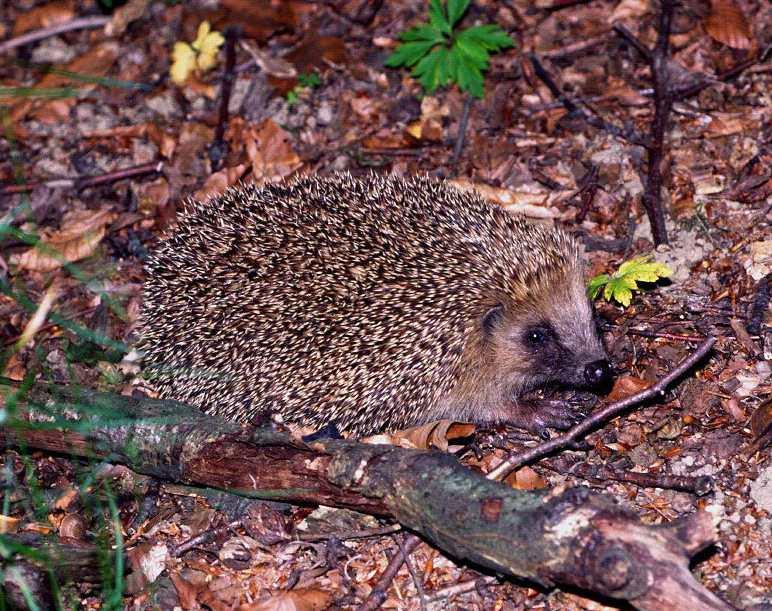Hedgehog
Recognise!
The main characteristic of the hedgehog is that its dorsal hair has developed into spines. Each spine is about 2-3 cm long. When intimidated, the hedgehog curls up and erects its spines so that the softer ventral area is protected against potential predators. Hedgehogs prefer structured, open rural landscapes with a diversified vegetation of hedges, shrubs, orchards and field margins. They also occur in broadleaved forests and are relatively common today in towns and cities, occupying natural gardens and parks. Hedgehogs hibernate from October to March in ground cavities or under piles of branches and leave litter. As such, the burning of litter in spring without checking for the presence of hedgehogs is a common cause of mortality of the species.
Did you know?
The hedgehog has a crepuscular and nocturnal activity pattern; the day is spent sleeping in a nest, shrubs and hedges, hollow tree trunks and rock cavities. Evening hours and the night is used for foraging. Foraging routes of males reach 2-3 kilometres, while females dedicate slightly less time to foraging. Their diet is manly composed of insects such as butterflies and beetles, but also centipedes and earthworms. Still blind newborn mice and shrews or bird eggs and fledglings are also preyed upon. Despite its spines and defensive behaviour, the hedgehog is falling prey to natural predators such as the Eurasian eagle owl or the badgers, which manage to uncurl hedgehogs with their powerful claws. Consequently, eagle owls and badgers are the most common predators, besides marten and foxes.
Females give birth to 3-10 young, once or twice a year. Newborn hedgehogs are blind with soft spines.
Hedgehogs are protected in Luxembourg.
